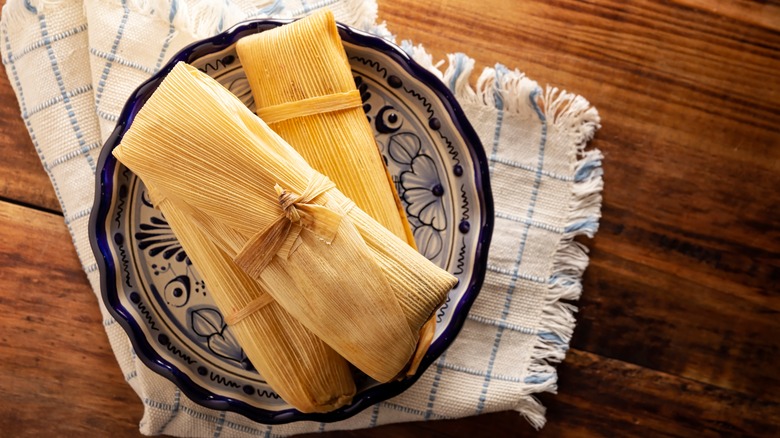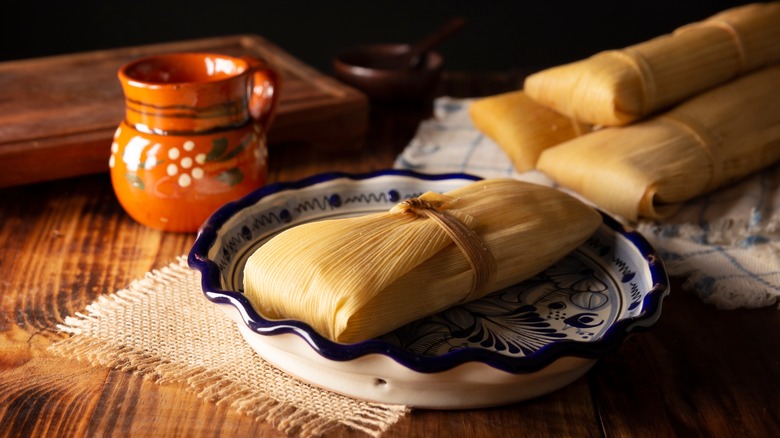Why Tamales Are Often Served At Las Posadas Celebrations
If you grew up in Mexico — or in a Mexican community abroad — then you are certainly familiar with the late-December celebration of Las Posadas. A deeply entrenched Mexican Christmas tradition, the nine nights of festivities — running from the 16th to the 24th each year, according to Learn Religions — can be thought of as a uniquely Mexican take on Christmas caroling, in which groups of families and friends stroll the streets singing and celebrating — and ultimately, feasting.
The site explains that the Spanish word "posada" translates to "inn" or "shelter." Las Posadas, therefore, reenact, in a certain way, the (somewhat historically contested) biblical Nativity story of Mary and Joseph's journey from Nazareth to Bethlehem and their search for a place to spend the night so that Mary could give birth to the baby Jesus (via Aleteia).
The legend goes that Joseph pounded on strangers' doors, but the out-of-town couple was not taken in by anyone, so they found a stable full of animals where Jesus came into the world. In traditional posadas, groups of revelers go on a neighborhood procession, Mary and Joseph-style, ultimately arriving at a specific house where the group sings "La Canción Para Pedir Posada" to ask permission to enter.
Making tamales is a group effort
Like any holiday celebration worth its salt, Las Posadas traditions culminate in a veritable feast. Once the procession has been admitted to the house welcoming guests that night, explains Learn Religions, a party is had — one that can range from small and casual to huge and fancy. In either case, traditional foods and drinks will be served, notes kiwilimón, from hot, spiced fruit punch to the corn husk-wrapped masa snacks called tamales.
The heart of any posada celebration, tamales consist of the corn dough known as masa that's typically stuffed with a savory filling, wrapped in a corn husk, and then steamed in a big pot (via The Spruce Eats). The snacks are served on repeat during Las Posadas because it's a communal kitchen task that brings family and friends together to roll, stuff, and wrap the tamales – ideal for uniting folks during Christmas, per We Are Cocina. They're also perfect for making ahead of time in bulk and keeping warm until the procession finally arrives. Tamales filled with Oaxacan-style mole are a common savory option, kiwilimón notes, while those stuffed with cream cheese and blackberries make for a sweet finale.

